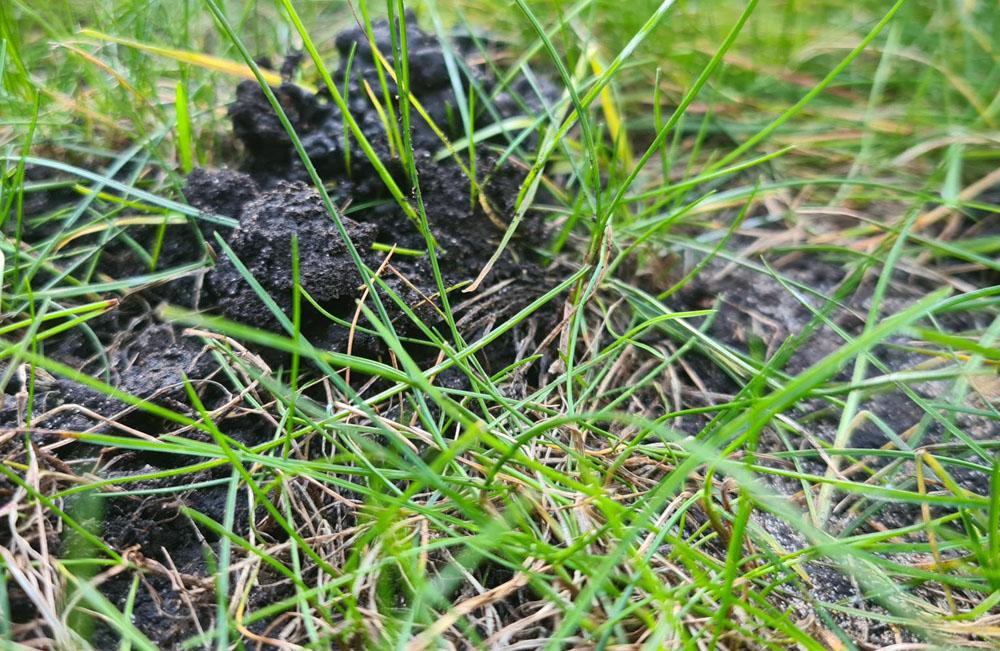
Created By
Matt Adams
Updated On
- March 1, 2024
Get FREE Exclusive Access
Keep your lawn pristine with exclusive tips, offers and insights that I only share with my private subscribers.
Latest Posts
Worm Casts on your lawn in Feb? Don’t use chemicals on them & here’s why
- By Matt Adams
- March 1, 2024
Jump to
Get FREE Exclusive Access
Keep your lawn pristine with exclusive tips, offers and insights that I only share with my private subscribers.
It starts warming up in Feb and you notice little piles of wet mud coming from the soil, only to realise it’s from worms in the soil bed.
Your first thought might be how to get rid of the worms. Not so quick though, they are actually beneficial to our soil for several reasons.
So, in this post I’m explaining why worm casts can actually help you – the lawn carer in your home. And how you can naturally control them while making sure you keep the much needed bio-diversity of the soil at just the right level for your grass to thrive.
How to know if it’s a worm cast (and not leatherjackets for instance)
Worm casts are created by earthworms – our beloved garden friends.
Worms travel when the soil is wet and soft. This explains the appearance of worm casts in Feb. Feb is also probably the first time you checkout your grass again after a bit of a harsh Winter.
They look like little mounds of soil and will crush when you step on them. Don’t crush them too early in the season though.
Why?
Because a crushed worm cast is an ideal place for any weed seedlings that are moving through the air to settle in your garden and germinate later on.
Why do earthworms help?
You’ve heard of aeration right? (read this if not) And maybe you know it can be a gruelling task. Well, the main thing that worms help with is aeration of the soil. As they move around, they create little tunnels and holes in. the soil, which can help massively towards drainage. Especially if you have dense clay type soil.
Air an nutrients can also make use of the holes created by earthworms
This is why I say to never use a chemical to get rid of worms.
In fact don’t even try to get rid of the worms because you don’t want a lifeless soil bed. Even if it does become unsightly occasionally.
Anyway, the best thing to do is focus on tidying up the castings. Here’s some tips on how to do that.
How to tidy up worm casts on your lawn
Instead of wondering how to get rid of them, think about tidying them up and preventing them (or at least reducing them) for the future.
Here are a few options
Option 1: Prevention Maintenance
There are a few things which should be done regularly that will help prevent the castings. These include
- By carrying out the regular lawn care tasks, you’ll be able to keep the castings at bay. This will include mowing, fertilising and aeration.
- Don’t leave grass clippings on the ground.
- Don’t water the grass too much because the soil can suffocate the worms and this makes them come to the surface – in turn, creating more of them.
Option 2: Wait until they dry
The best way to clear them off your lawn is to simply wait until they dry up and brush them off.
By waiting for them to dry you’re much less likely to have a big dirt patch in the middle of the lawn. Granted, you may need to wait until the Spring for it to dry up properly but
Option 3 : Top Dress
By adding some sort of top dressing material, you’ll be able to blend the worm. casts into the top layher of soil. Note, however that if you do the top dressing early in the season, you may see some of the castings come back through the top of the new dressing.
Don’t worry too much about this, as they will be easier to remove when the weather does warm up.

This Post Has 5 Comments
Use a kitchen fork to lift the worm casts off the lawn if they are wet , before you mow.
👍
Thank you.
All new information for me.
Will do an autumn feed.
Thank you for this information.
It has been very helpful.
That was a helpful article. I do have a patch left though from the worm cast as it was still damp and I needed to mow the grass which was a nuisance as it is a new lawn.